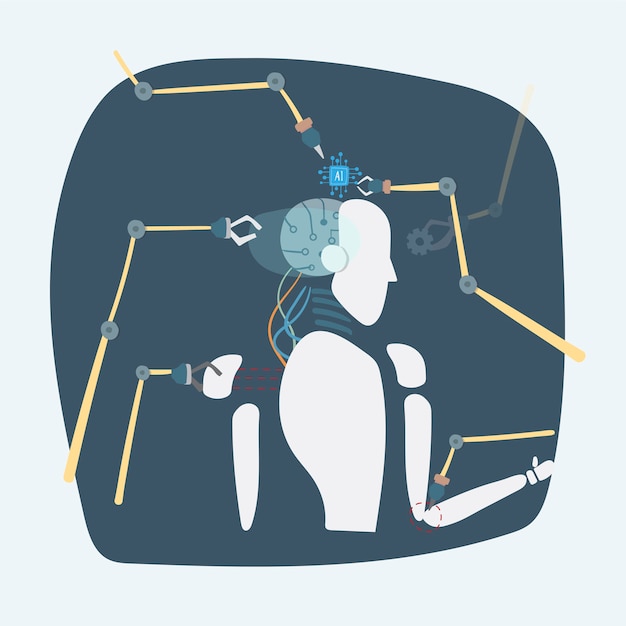

The nervous system is responsible for transmitting information throughout the body at lightning-fast speeds.
The human brain contains around 100 billion neurons.
The nervous system controls all voluntary and involuntary actions in the body.
Nerve impulses travel at a speed of about 268 miles per hour.
The nervous system allows us to experience sensations such as touch, taste, smell, and sound.
Nervous tissue cannot regenerate or heal like other types of tissue in the body.
The brain, spinal cord, and nerves make up the three main components of the nervous system.
The optic nerve is the only part of the nervous system that can be seen by the naked eye.
The nervous system is involved in the release of hormones and the regulation of bodily functions.
The brain uses about 20% of the body’s oxygen and glucose supply.
The nervous system is incredibly adaptive and can rewire itself in response to changes or injuries.
The average adult brain weighs about 3 pounds.
The human body contains approximately 45 miles of nerves.
The nervous system is responsible for the fight-or-flight response in times of danger or stress.
The brain processes information at a rate of about 120 bits per second.
The human brain continues to develop and mature well into a person’s 20s.
The fastest reflex in the human body is the blink reflex, which occurs in about 100 milliseconds.
The cerebellum, located at the back of the brain, is responsible for coordinating movement and balance.
The nervous system is divided into the central nervous system (CNS) and the peripheral nervous system (PNS).
The longest nerve in the human body is called the sciatic nerve and runs from the lower back to the foot.
The brain’s capacity for storing information is virtually limitless.
The nervous system can transmit signals at speeds of up to 268 miles per hour.
The smell receptors in the nose are directly connected to the brain’s limbic system, which controls emotions and memory.
Nervous system disorders, such as Alzheimer’s and Parkinson’s disease, can significantly impact a person’s quality of life.
The human brain generates enough electricity to power a small light bulb.
The brain is the most energy-consuming organ in the body, using about 20% of the body’s total energy.
The spinal cord acts as a superhighway for nerve signals traveling between the brain and the rest of the body.
The brain is composed of about 75% water.
The nerves in the body can send signals at speeds of up to 250 miles per hour.
The nervous system is continuously monitoring and adjusting the body’s internal functions to maintain homeostasis.
The pain we feel is a result of the nervous system sending signals to our brain to alert us of potential harm or injury.
The autonomic nervous system controls involuntary functions such as breathing, heart rate, and digestion.
The human brain is capable of rewiring and forming new connections throughout life.
The brain and spinal cord are protected by a bony structure called the skull and the spinal column, respectively.
The nervous system is responsible for the sensation of touch, allowing us to feel textures, temperature, and pain.
The brain produces different types of neurotransmitters that play a crucial role in regulating mood, sleep, and appetite.
The production of new nerve cells, or neurogenesis, can occur in some parts of the brain throughout adulthood.
The nervous system plays a vital role in our ability to learn, remember, and problem-solve.
Our nervous system constantly sends signals to our muscles to keep them in a state of tonus or readiness.
The PNS has two main divisions: the somatic nervous system, which controls voluntary movements, and the autonomic nervous system, which regulates involuntary functions.
The brain can process and interpret information from our senses in a matter of milliseconds.
The optic nerve is the second cranial nerve and is responsible for transmitting visual information from the eye to the brain.
The vagus nerve, the longest cranial nerve, carries signals between the brain and various internal organs.
Electrical signals in the nervous system are transmitted through the exchange of ions like sodium and potassium.
The nervous system is a complex and intricate network that allows us to perceive the world, navigate our environment, and experience life.
Around the world, coffee enthusiasts enjoy Monin coffee concentrate since it is a multipurpose product. Conveniently combining…
The Importance of Choosing the Right Shower for Your Bathroom Renovating your bathroom can be…
Usain Bolt holds the record for the fastest 100-meter sprint in history.Bolt was named Sportsman…
Love is in the air... and it smells suspiciously like chocolate!Roses are red, violets are…
Life's a beach, take a picture and relax.Sun, sand, and salty kisses. That's what beach…
Hungary is home to the largest thermal water cave system in the world.The Rubik's Cube…